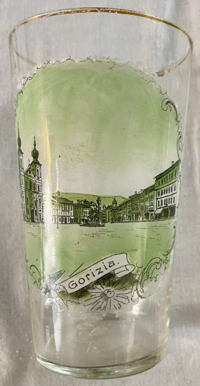

|
| ITALIA | ITALY |
| regione: Friuli - Venezia Giulia | |
| provincia: Gorizia |
Gorizia is situated at an elevation of 84 m on the river Isonzo in northeastern Italy. It was first mentioned in a document in 1001 when Emperor Otto III divided the territory between the patriarch of Aquileia and the count of Friuli. The latter immediately assumed the title of Duke of Görz after the name of the castle (the town itself was not recognized as such until 1307). Görz came in possession of the Eppenstein family from Carinthia in 1031 and in 1090 passed to the counts of Lurn, who in 1202 also secured the territory of Aquileia. The Counts of Görz soon became a highly influential family. In 1253 Meinhard III of Görz inherited Tyrol (Meinhard I of Tyrol) as he was married to Agnes of Tyrol. Upon Meinhard's death in 1258, his countries where divided between his two sons. Albert II of Görz received Gorizia, the Puster valley (today eastern South Tyrol) and Lienz (today East Tyrol), while Meinhard II of Tyrol (IV of Görz) received the other Tyrolean areas. The main residence of the Görz line since 1271 was castle Bruck in Lienz. After the death in 1500 of the last Count of Görz, Leonhard, his territories passed to Habsburg Austria, which had inherited the possessions of the counts of Tyrol already in 1363. Apart from a period of French occupation between 1809 and 1815, Gorizia remained with Austria until the dissolution of the Austro-Hungarian Monarchy in 1918. During World War I, Gorizia and the surrounding Karst and Isonzo region were the scene of some of the bloddiest battles of the war. After World War II, the old town of Gorizia was excepted from the 1947 cessation of eastern Friuli to Yugoslavia. Only the eastern parts of the town with its mainly Slovene-speaking population became part of Yugoslavia (today Slovenia) as Nova Gorica. Today, Gorizia is the capital of the Gorizia province of the Friuli-Venezia Giulia region and has a population of about 34,000 inhabitants. Together with Nova Gorica in Slovenia, it was selected as one of the European Capitals of Culture for 2025.


The centre of the old town is the spatious
 Piazza Grande
Piazza Grande
The square is dominated by the impressive
 Chiesa Sant' Ignazio.
The construction of the Jesuit church began in 1654 and lasted until 1724. The final consecration only
took place in 1767.
Chiesa Sant' Ignazio.
The construction of the Jesuit church began in 1654 and lasted until 1724. The final consecration only
took place in 1767.


The  Fontana del Nettuno in the centre of the square was created
in 1756 by Marco Chiereghin from Padova.
Fontana del Nettuno in the centre of the square was created
in 1756 by Marco Chiereghin from Padova.

The  Colonna di Sant' Ignazio [near left, no. 781: foreground]
had been donated in 1687 and originally
stood in front of the former Jesuit church of Sant' Ignazio.
Colonna di Sant' Ignazio [near left, no. 781: foreground]
had been donated in 1687 and originally
stood in front of the former Jesuit church of Sant' Ignazio.
The  castle [near left, no. 781: background]
with its characteristic pentagonal shape surrounded by a wall with 6 towers
dates back to the 11th/12th century. The castle is arranged around the central Corte dei Lanzi (courtyard of
the armed guards). The Palazetto dei Conti dates from the 13th century, the Palazzo degli Stati Provinciali
was created in the 15th century. The Palazetto Veneto finally dartes from the 16th and 17th centuries.
castle [near left, no. 781: background]
with its characteristic pentagonal shape surrounded by a wall with 6 towers
dates back to the 11th/12th century. The castle is arranged around the central Corte dei Lanzi (courtyard of
the armed guards). The Palazetto dei Conti dates from the 13th century, the Palazzo degli Stati Provinciali
was created in the 15th century. The Palazetto Veneto finally dartes from the 16th and 17th centuries.
![[scale]](lineal.jpg)